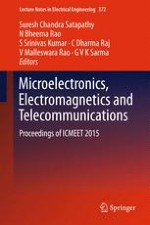2016 | Book
Microelectronics, Electromagnetics and Telecommunications
Proceedings of ICMEET 2015
Editors: Suresh Chandra Satapathy, N Bheema Rao, S Srinivas Kumar, C Dharma Raj, V Malleswara Rao, G V K Sarma
Publisher: Springer India
Book Series : Lecture Notes in Electrical Engineering
